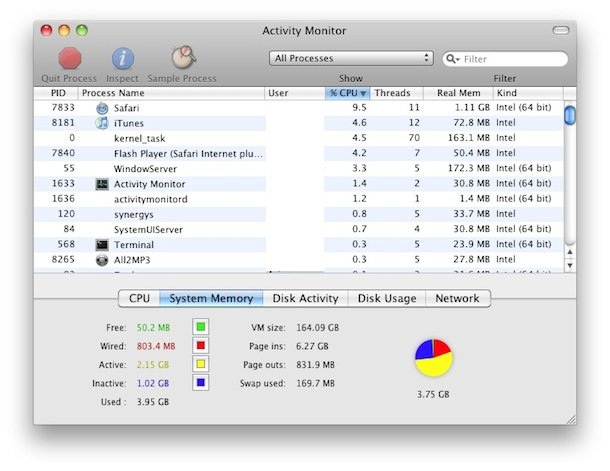Terminal Command For Mac To Close Program
This feature is available in (1.1.383 or higher). • General Usage • • • • • • • • • Advanced Topics • • • • Reference • • • • • Introduction The RStudio terminal provides access to the system shell from within the RStudio IDE. It supports xterm emulation, enabling use of full-screen terminal applications (e.g.
Contrary to public opinion I don’t have anything against the new version of Office for Windows (In fact I think it’s one of the best UIs Microsoft has done) but I’d prefer most of the time to stay within the Mac environment for various reasons. Usually the system does this well but sometimes other programs can change default application handling preferences against your wishes. Parallels has since acknowledged that bug and fixed it in but it set me thinking about the confusion this unexpected behaviour would cause for users who weren’t intimately familiar with what was going on. An example of this recently happened to me when I installed Parallels. Mac make default program for mp3. For some reason after installing Office 2007 in the Windows environment Parallels started up each time I loaded an Office document as it had changed the Mac Office file associations to point at Office for Windows.
Text editors, terminal multiplexers) as well as regular command-line operations with line-editing and shell history. There are many potential uses of the shell including advanced source control operations, execution of long-running jobs, remote logins, system administration of RStudio Servers, and the aforementioned full-screen terminal programs. This article does not attempt to cover fundamentals on when and how to use a system shell.
Instead, it focuses on the features, design, options, and limitations of the RStudio terminal feature itself. Note, unlike most RStudio features, the nature of the terminal leads to several platform-specific differences. These primarily break down into two categories: Windows, and everything else (Mac, Linux, and Server). Provides a summary. Getting Started The Terminal tab is next to the Console tab. Click on the Terminal tab and a new terminal session will be created (if there isn't one already).
My experience with the Fujitsu ScanSnap was hit and miss. I can't recall exactly what I didn't like, but when it came time to buy a scanner for home, I remember not wanting the Fujitsu ScanSnap. I choose it for work a number of years back based on those high ratings you speak of, but personally I had one problem or another with it half the time. Document scanning program for mac.
Terminal command to close terminal. Discussion in 'Mac' started by Oliver Marshall, Feb 26, 2007. Other (command line) programs. The first command it runs is usually a shell (can be set via preferences). Mac OS X 10.5: Terminal command changes in Leopard. Mac OS X 10.5: Terminal command changes in Leopard. Mac keyboard shortcuts By pressing certain key combinations, you can do things that normally need a mouse, trackpad, or other input device. To use a keyboard shortcut, press and hold one or more modifier keys and then press the last key of the shortcut.
• If the tab isn't visible, show it via Shift+Alt+T ( Tools->Terminal->Move Focus to Terminal). • The full list of terminal-related RStudio commands and keyboard shortcuts is in. Most terminal-related commands can be found on the Terminal dropdown menu in the terminal pane, and on the Tools-> Program like razor for mac. Terminal menu. Here's a terminal with the output of simple command output: The visual appearance of the terminal is controlled via the Tools->Global Options->Appearance settings. The xterm emulation enables use of full-screen programs. Here is Emacs running (after changing the RStudio Editor Theme to Merbivore): Multiple Terminals RStudio supports multiple terminal sessions. To start another terminal session, use the New Terminal command on the Terminal dropdown menu, or Shift+Alt+R.

Mac Os X Terminal Commands
Each terminal session is independent, with its own system shell process and buffer. Switch between them by (1) using the arrows next to the drop-down menu, (2) clicking on the terminal's name in the drop-down, or (3) using the Previous Terminal/ Next Terminal drop-down menu commands. The dropdown button shows the name of the currently selected terminal session ('Terminal 3' in the following screenshot): Terminal Names Terminal sessions have a default name, 'Terminal 1', 'Terminal 2', and so on.
How To Use Terminal On Mac
Rename the current terminal via the Rename Terminal command on the drop-down. For example, renaming 'Terminal 3' to 'Remote Session' in the previous example gives this: Thus, in your workflow, you can create multiple terminals and give them meaningful names to simplify navigation. A collection of named terminals, or 'terminal set', is generally associated with an RStudio project. For more details, see. An alternative (or complementary) approach is to use a terminal multiplexer as described in. Execute in Terminal When editing files in the RStudio editor, any selection (or the current line if nothing is selected) can be sent to the active terminal via Ctrl+Alt+Enter (also Cmd+Alt+Enter on the Mac). If a single-line was sent to the terminal the cursor will advance automatically to the next line, allowing single-stepping. In following example, a simple Python source file was loaded, a Python interpreter started in the current terminal, and Ctrl+Alt+Enter used to step through the script: If a shell file is being edited ( *.sh), Ctrl+Enter (plus Cmd+Enter on Mac) can be used to single-step, as can the Run toolbar button.